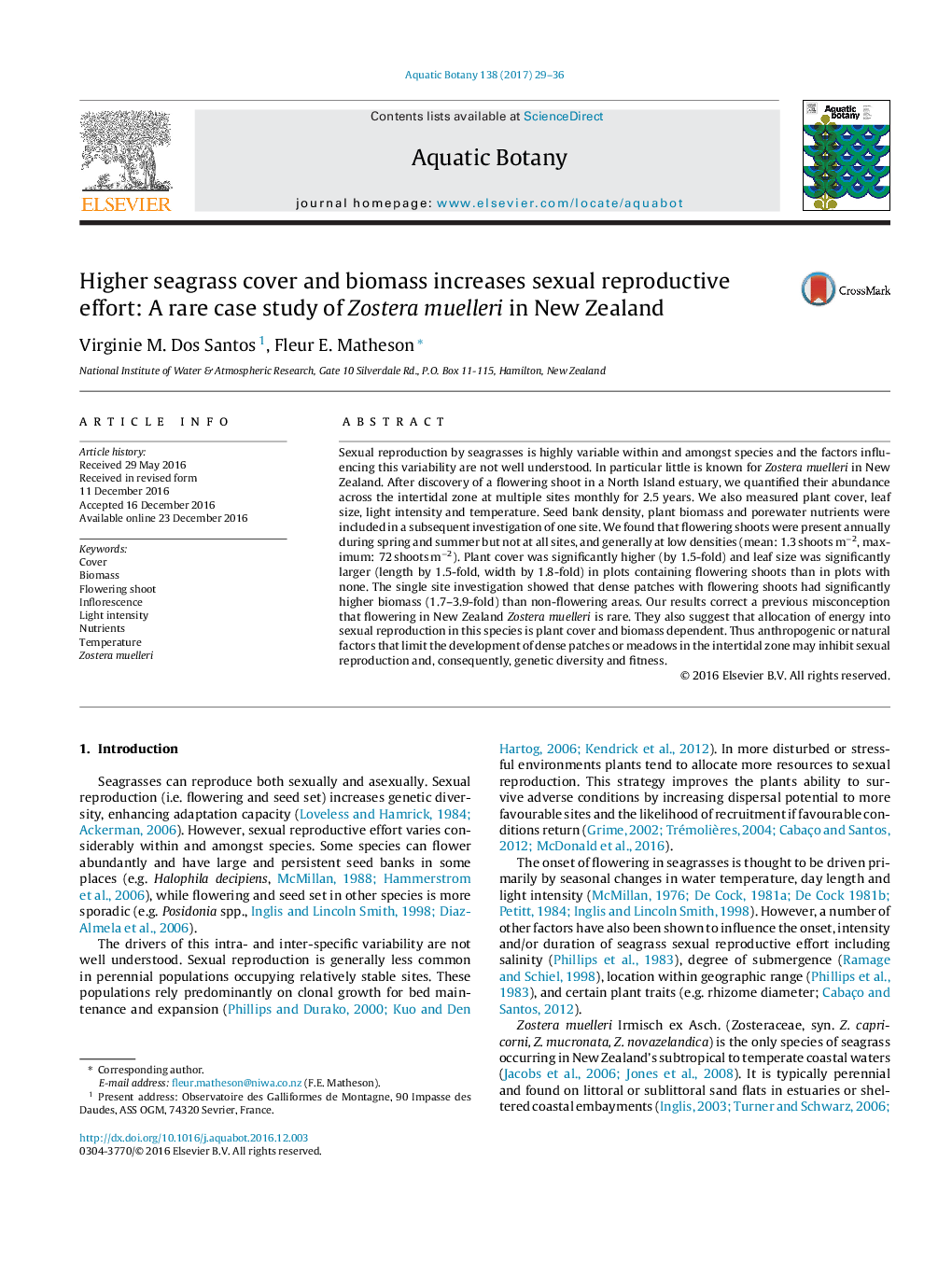| Article ID | Journal | Published Year | Pages | File Type |
|---|---|---|---|---|
| 5764056 | Aquatic Botany | 2017 | 8 Pages |
â¢Corrects misconception that flowering in New Zealand Zostera muelleri is rare.â¢First study of Zostera muelleri flowering in a New Zealand estuary.â¢Flowering was associated with intertidal patches of higher plant cover and biomass.â¢Stressors that prevent development of dense patches will limit sexual reproductive effort.
Sexual reproduction by seagrasses is highly variable within and amongst species and the factors influencing this variability are not well understood. In particular little is known for Zostera muelleri in New Zealand. After discovery of a flowering shoot in a North Island estuary, we quantified their abundance across the intertidal zone at multiple sites monthly for 2.5 years. We also measured plant cover, leaf size, light intensity and temperature. Seed bank density, plant biomass and porewater nutrients were included in a subsequent investigation of one site. We found that flowering shoots were present annually during spring and summer but not at all sites, and generally at low densities (mean: 1.3 shoots mâ2, maximum: 72 shoots mâ2). Plant cover was significantly higher (by 1.5-fold) and leaf size was significantly larger (length by 1.5-fold, width by 1.8-fold) in plots containing flowering shoots than in plots with none. The single site investigation showed that dense patches with flowering shoots had significantly higher biomass (1.7-3.9-fold) than non-flowering areas. Our results correct a previous misconception that flowering in New Zealand Zostera muelleri is rare. They also suggest that allocation of energy into sexual reproduction in this species is plant cover and biomass dependent. Thus anthropogenic or natural factors that limit the development of dense patches or meadows in the intertidal zone may inhibit sexual reproduction and, consequently, genetic diversity and fitness.
